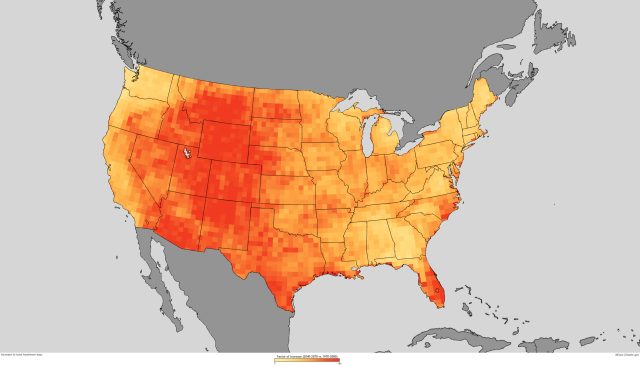
Some may like it hot, but probably not quite this hot. (credit: Climate.gov)
This summer has been particularly hot across the US, and scorching temperatures have forced most of us to take refuge somewhere with air-conditioning. This leads to high electricity demand, especially in the hottest regions. As climate change continues, we are likely to experience similar hot temperatures more frequently.
Climate change modeling also forecasts that these increased temperatures will result in increased storm intensity and flooding. These types of extreme weather-related events could have a profound impact on the population distribution, if populations shift away from regions affected by extreme storms.
Combined, the change in weather and population movement can present regional infrastructure challenges due to significant changes in electricity demand. Understanding where electricity service is most vulnerable is of utmost importance if we're going to plan ahead for these future challenges. In an investigation recently published in Nature Energy, researchers have predicted how this combination of climate and population stresses will influence electricity demand using high-resolution, spatially explicit tools.